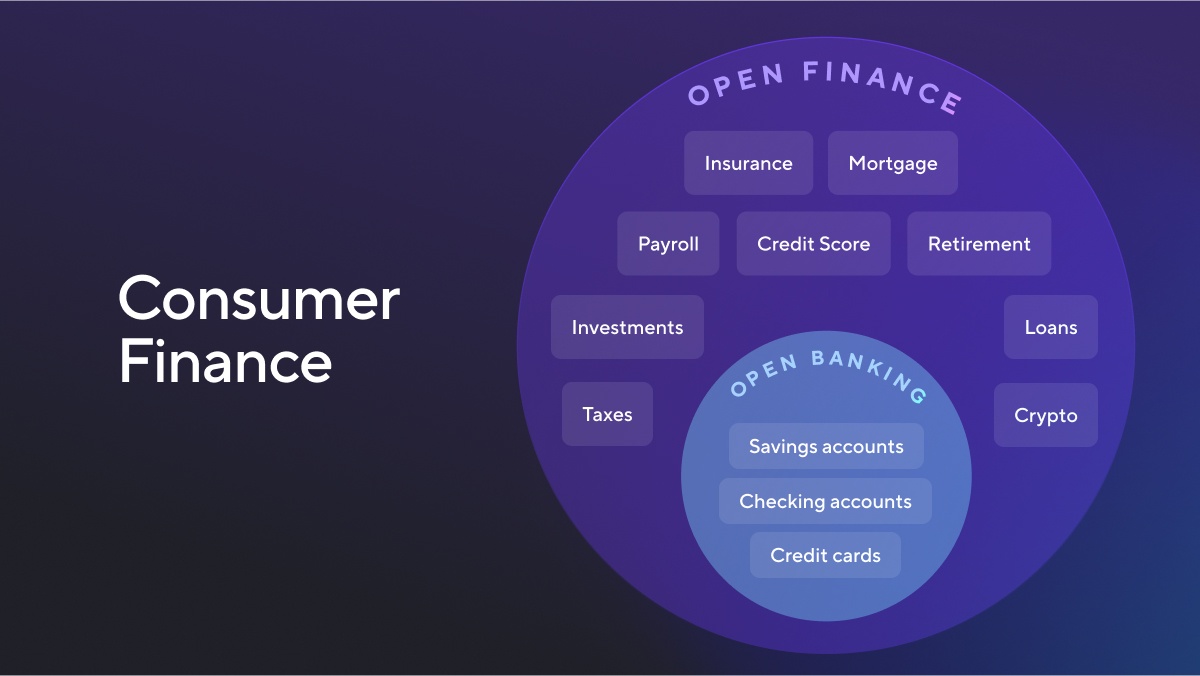In the vast ocean of the financial industry, a new wave is making its presence felt, promising to redefine how consumers interact with their financial data. As someone who’s spent countless hours coding and creating at the intersection of finance and technology, I’ve witnessed the emerging currents of open finance. This isn’t merely a buzzword; it’s the beacon of a future where financial empowerment is not just a possibility but a given.
We can all agree that Open Banking and Open Finance hold significant promise for consumers with regard to what data they can access and where. We know that to build this future there is much to do. We must build:
- APIs to control access with granular permissions which specify exactly what it is the consumer is accessing
- Authentication flows to support various protocols which safeguard the data
- UIs for consumers to easily review the permissions granted, which enable them to remove or modify that access as necessary.
This is a lot to build, especially when you consider the scale of the changes required. We’re talking about the entire consumer finance industry. Why would we undertake something so monumental? We believe building secure trustworthy flows for consumers to access their data is critical to creating a productive open finance system. Access to consumer data will enable consumers to be more active participants in their financial lives and make better, more informed choices with their money.
Current State of Consumer Data
Stop for a moment and consider this question, “What would it take for you to assemble an overview of all your personal finances?” From bank accounts, investments, retirement, loans, taxes, insurance, crypto—the list is endless. This thought experiment should shine a bit of light on the issue we’re all here to solve. Consumer data is siloed in the applications where that data originates. Just remembering where my financial entanglements are is difficult enough. Putting all the information together so that I can have agency over that data (i.e., take action when it’s needed) is a burden to say the least. There has to be a better way.

From Open Banking to Open Finance
Open Banking represents a transformative movement aimed at democratizing access to consumer financial data, propelled by the Consumer Financial Protection Bureau’s (CFPB) initiative to foster competition within the financial sector. Defined as the secure, consumer-permissioned sharing of financial data via specifically designed APIs, Open Banking seeks to empower consumers by granting them control over their own financial information, allowing for a more personalized and efficient management of their financial lives.
Building on the foundations laid by Open Banking, Open Finance is poised to revolutionize the broader financial landscape by extending the principles of data accessibility and consumer empowerment beyond traditional banking. Acknowledging that a consumer’s financial life encompasses more than just banking—spanning retirement accounts, investments, taxes, and insurance, among others—Open Finance aims to integrate these diverse financial segments into a cohesive system. By broadening the scope of Open Banking to include all facets of consumer finance, Open Finance stands at the forefront of a major shift towards a more interconnected, transparent, and empowered financial future for consumers.
The Pivotal Role of Payroll Data
At the heart of open finance lies payroll data—a treasure trove often overlooked. Yet, it holds the key to unlocking a myriad of possibilities for enhancing financial wellness. This data doesn’t just represent numbers on a pay slip; it’s a comprehensive snapshot of an individual’s financial income, encompassing earnings, deductions, benefits, and more. Embedding direct read and write access to payroll systems within a financial institution’s application opens the door to a wealth of new financial tools. Direct deposit switching, verification of income and employment for lending, and earned wage access are just the starting point.

Unveiling the Promise of Open Finance and Payroll Data
Imagine having a bird’s-eye view of your entire financial landscape. From the minutiae of daily transactions to the larger lens of investments and savings—every detail accessible in a glance, all in one place. This dream is gradually morphing into reality through open finance. It’s about dismantling the barriers between different financial services and systems, enabling a seamless flow of data that puts consumers in control. For consumers this is a new era of financial autonomy, where managing finances becomes less about juggling multiple apps and more about strategic decision-making. For financial institutions, it opens up new avenues for offering personalized services, fostering customer loyalty, and staying competitive in a rapidly evolving market.
The Case Studies of Tomorrow
Imagine applying for a mortgage not with a folder full of documents but with a secure digital handshake that instantly shares your financial credentials with your lender. Or envision a scenario where managing your taxes is no longer a dreaded annual ritual but an automated process that optimizes your withholdings in real-time. These aren’t just fanciful dreams; they’re the very future that open finance is poised to realize.
Conclusion: A Call to Build Together
This vision of interconnected, actionable consumer data is what we’re working to push forward at Atomic. The future of finance is a collaborative endeavor, requiring the collective efforts of fintechs, developers, financial institutions, and consumers. It’s a journey of transformation that promises to reshape our relationship with money, making it more transparent, accessible, and empowering. The question is not if open finance will redefine our financial landscape, but how we can come together to harness its full potential.

